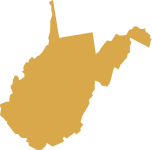Population Projections Dashboard
Access the the Dashboard
There are many factors that these projections cannot take into account, such as future changes in immigration patterns, adjustments states make to the census data to address prison gerrymandering, or how racial and ethnic groups are categorized in the data.
This dashboard uses a lot of data – please allow up to 10 seconds for the dashboard to load.
Scroll down to learn how to use this dashboard.
How to Use the Dashboard
We have created this resource to help individuals and organizations understand how their state’s population may change in the coming years, if current trends continue.
To use this dashboard, use the dropdown menus on the right to select:
- Your State
- Your Geography*
- County
- Congressional District
- SLDL: State Legislative District Lower, also known as State House, State Assembly, etc.
- SLDU: State Legislative District Upper, also known as State Senate
- Your Specific Geography of Interest (County / Congressional District / State Legislative District)
- Base Year (this is the year you want to compare the projected population to, and is relevant for change metrics only)
- Projection Year (this is the year you want to see data for, and can be any year from 2026 to 2035)
- Population Type (Total, or Population by race/ethnicity)
- Metric to Display**:
- Projected Population (for the Projection Year)
- Change in Projected Population (between the Projection and Base Years)
- Percentage Population Change (between the Projection and Base Years for that Geography)
- Percentage Point Change in Population Share (between the Projection and Base Years of the total population for that Geography – not available for total population)
- Your Color Theme (Green, Gold, or Purple)
* You can also click directly on the map to select a county or district of interest. Districts are current for the 2026 elections as of December 8, 2025.
** Only the data selected in Metric to Display will show in the map. All metrics will show in the table at the bottom right of the dashboard.
Use the plus and minus buttons on the map to zoom in and out, You can also use your cursor to zoom in and out, and click and drag the map to move around an area. Click “reset” to go back to the default view.
Dashboard Use Case Examples
Example 1: Will My District Get Larger or Smaller?
Congressional districts must typically contain a total population that is +/- 1 person of the “ideal population,” which is the state’s total population divided by the number of districts. Assuming the state does not gain or lose any congressional seats, you can analyze your district to see if it will need to get (geographically) larger or smaller after the next census by selecting:
- State: Pennsylvania
- Geography: Congressional district
- Geography of Interest: 11
- Base Year: 2020
- Projection Year: 2030
- Population Type: Total
- Metric to Display: Change in Projected Population
- Color Theme: Gold
The dashboard tells us that Pennsylvania’s congressional district 11 is projected to grow by nearly 69,000 people. The projected population percentage change is 9.01%, higher than the statewide average of 5.33%. As a result, we can expect district 11 to get geographically smaller in the next round of redistricting.
Example 2: Analyzing Counties Projected to have the Fastest Hispanic or Latino Population Growth
You can use this dashboard to analyze counties projected to have the fastest Hispanic or Latino population growth over time. To do this, select the following:
- State: Colorado
- Geography: Counties
- Geography of Interest: [leave defaulted to Adams or select any county of interest]
- Base Year: 2023
- Projection Year: 2035
- Population Type: Hispanic or Latino
- Metric to Display: Percentage Population Change
- Color Theme: Purple
The map in the dashboard shows that Weld, Jackson, and Custer Counties are projected to have the fastest increases in the Hispanic population over time.
Access the Data
Data is available in all 50 states. To download the data, click on your state below. You can Filter by Type of Data and select “Projections,” or Type to Filter by Name and type “Projections.”
Projections are available at the census block or county level, and for total population by race/ethnicity or voting age population by race/ethnicity.
Note that projections at the block level are more uncertain than projections at larger areas of geography. Projections for a single block should be viewed with caution. We provide block level projections so that users can aggregate the data to larger geographies, such as districts. Projections are never without uncertainty, even at larger levels of geography, but that uncertainty is reduced relative to projections at the block level.
-

Alabama -

Alaska -

Arizona -

Arkansas -

California -

Colorado -

Connecticut -

Delaware -

Florida -

Georgia -

Hawaii -

Idaho -

Illinois -

Indiana -

Iowa -

Kansas -

Kentucky -

Louisiana -

Maine -

Maryland -

Massachusetts -

Michigan -

Minnesota -

Mississippi -

Missouri -

Montana -

Nebraska -

Nevada -

New Hampshire -

New Jersey -

New Mexico -

New York -

North Carolina -

North Dakota -

Ohio -

Oklahoma -

Oregon -

Pennsylvania -

Rhode Island -

South Carolina -

South Dakota -

Tennessee -

Texas -

Utah -

Vermont -

Virginia -

Washington -

West Virginia -

Wisconsin -

Wyoming
Download Reports (coming soon)
Reports are in progress and will be available soon.
Methodology
To create these projections, we utilized the 2020 PL 94-171 decennial census data and the 5-year estimates of the total population and the voting age population by race/ethnicity from the most recent American Community Survey (ACS). The most recent data available when we created these projections was from 2023, which includes data collected from 2019-2023. We calculated a rate of change between these two datasets to generate annual projections for 2026 through 2035.
The county level projections are based on county level data. The census block level projections – which are used to calculate the congressional and state legislative district projections – are based on block group data that is disaggregated to the block level. Additional details are available in the ReadMe that accompanies all of our population projection datasets.